Lighting is considered one of the most important factors in ergonomics, but it is often overlooked, rushed, or sacrificed for style. Do you hate the lighting in your office? You’re not alone. A study was conducted by the American Society of Interior Designers and it showed that 68 percent of employees were dissatisfied about the lighting situation in their offices. That is a very large percentage proving lighting is a daily ergonomic issue.
Types of Lighting
What type of lighting should you choose for your office? There are many different options to choose from, and each type has its own specific purpose, advantages and disadvantages. You can combine these different types of lighting to create a properly lit working atmosphere.
Task Lighting
If your office lacks natural and overhead light, you may want to consider adding task lighting to all of the employee desks. Tasks lights are small lamps that can be plugged into any outlet to provide extra lighting right where the employee needs it.
Overhead Lighting
Overhead lighting isn’t the greatest office lighting source. It can be to bright and can cause shadows or just be too dim. It’s usually best to add other types of lighting and not rely solely on an overhead light. For those working in an office with fluorescent overhead lights, adding either corrective or ambient lighting may help to reduce any discomfort you experience working with fluorescent lighting.
Natural Light
Windows tend to be rare, typically reserved for executives with corner offices. Windows go beyond adding a view they also provide valuable natural light. Natural light is a much better option than any electric lighting source. Natural light can increase satisfaction and improve mood and behavior in the workplace.
Ambient Lighting
Ambient lighting has a low intensity that can help you create a more peaceful atmosphere.
Some tips to remember when choosing office lighting:
Don’t Go Too Dim or Too Bright
If the lighting is off it will cause eye strain.
Go for a Soft Yellow Light
Lights with more yellow tones are easier on the eyes, and they also tend to be easier on your Circadian rhythms.
Watch the Placement of Lighting
No matter what kind of light you choose, glare is always a big area of concern. That’s why it’s best to go for indirect lighting; never, ever position lights so that their light bounces off of the screen.
Adjust Lighting with the Time of Day
It’s important to change the level of brightness in the office when the sun goes down and when it comes up (especially in the winter months when we don’t get as many hours of sun in a day).
While all of these measures will help towards getting the best possible light ergonomics of your workplace, it’s also important to remember the 20-20-20 rule: for every 20 minutes spent staring at the screen, stop and look at something 20 feet away for 20 seconds to help the eye refocus and prevent eye strain.
Office Lighting Design in Workspace
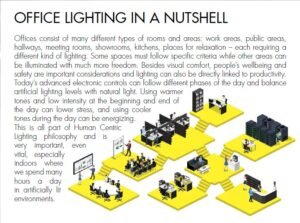
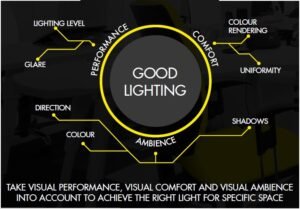

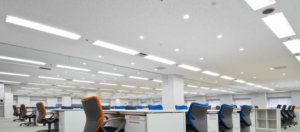

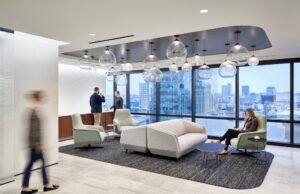
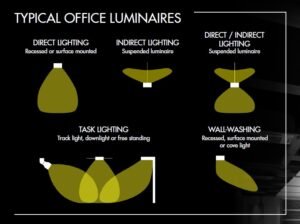
Thanks for sharing this amazing piece of info, Letting you know we are the Guest Post Blogger, You can send your articles to us. Just have a look at some piece of work.
Happy New Year Wishes
108 Names of Lord Ganesha
Places to Visit in Varanasi
Top 10 Reasons for Breakups
Thank you for sharing this useful information. Keep sharing this kind of information about the Interior Design in Clapham,
Interior Design in Clapham